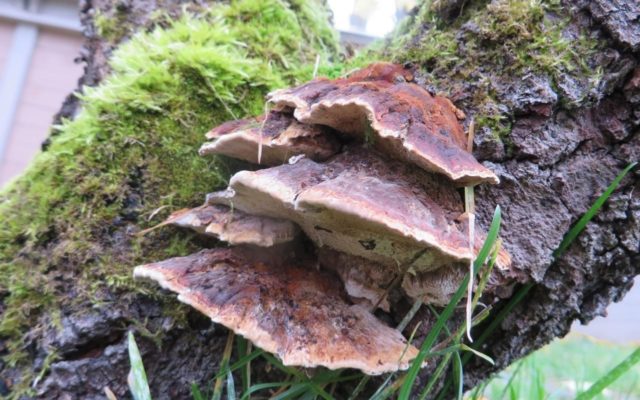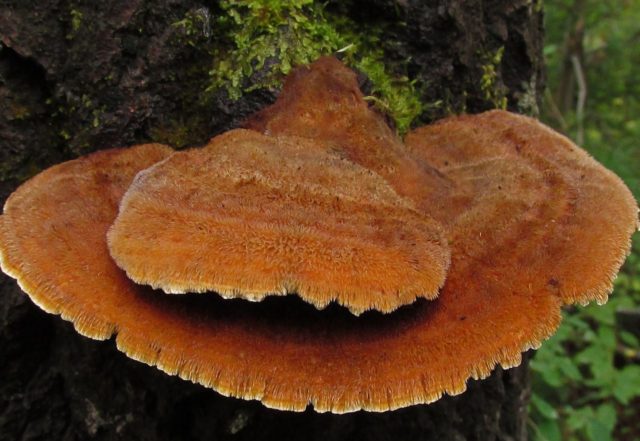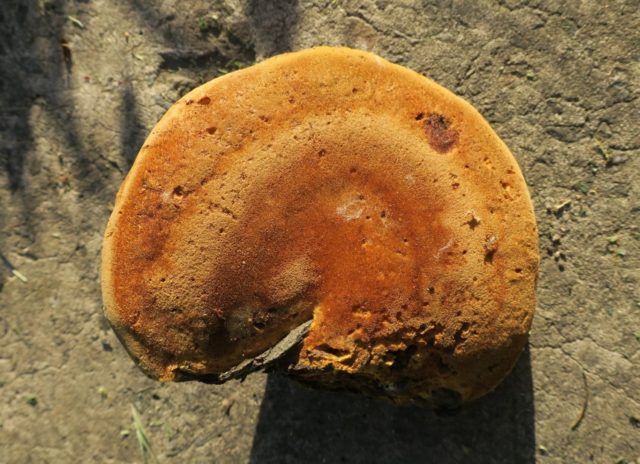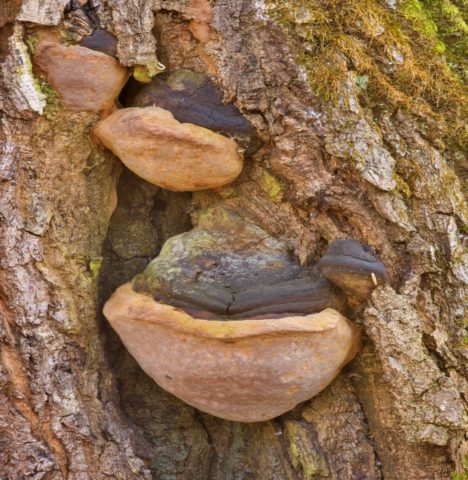Content
Radiant polypore belongs to the Gimenochetes family, whose Latin name is Xanthoporia radiata. It is also known as the radially wrinkled tinder fungus. This specimen is an annual ossified fruiting body growing on deciduous wood, mainly alder.
Description of the radiant tinder fungus

This instance is widespread in the Northern Hemisphere.
The fruit body of this species is semi-sedentary, adherent to the side, consisting of only one cap. As a rule, the cap is round or semicircular in shape with a triangular cross-section, but on fallen trunks it can be open. At a young age, the edges are rounded, gradually becoming curved, pointed or sinuous. The maximum size of the hat is 8 cm in diameter, and the thickness is no more than 3 cm.
At the initial stage of maturation, the surface is velvety or slightly pubescent, with age it becomes naked, shiny, radially wrinkled, sometimes warty. Its color ranges from tan to brown with concentric stripes. Older specimens can be distinguished by an almost black and radially cracked cap. The fruits are arranged in tiles or in rows, quite often they grow together with caps among themselves.
The hymenophore is tubular, light yellow in color; as the fungus matures, it becomes grayish brown. When touched, it starts to darken. Spore white or yellowish powder. The pulp is colored in a reddish-brown tone with zonal striping. At a young age, it is watery and soft, as it ages, it becomes very hard, dry and fibrous.
Where and how it grows
The most active tinder fungus grows in areas
Northern Hemisphere, which is characterized by a temperate climate. Most often, this species is found in North America, western Europe and central Russia. It settles on weakened, dead or living deciduous trees, mainly on the trunks of gray or black alder, less often on birch, linden or aspen. It grows not only in forests, but also in city parks or gardens.
Is the mushroom edible or not
This variety belongs to the category of inedible mushrooms. Despite the fact that the tinder fungus does not contain toxic substances, it is not suitable for food because of its tough and fibrous pulp.
Doubles and their differences

This species settles on deciduous wood, causing white rot on them.
Outwardly, the radiant tinder fungus is similar to the following gifts of the forest:
- Fox tinder - an inedible specimen. It settles on dead or live aspens, causing yellow mixed rot on them. It differs from the radiant one in the hard granular core located inside the base of the fungus, as well as in the hairy cap.
- Bristly-haired polypore - belongs to the group of inedible mushrooms. A distinctive feature is the large size of the fruit bodies.In addition, it is common for the twin to settle on broadleaf and fruit trees.
- Tinder fungus oak-loving - the main difference from the species under consideration is the more massive, rounded fruiting bodies. In addition, there is a hard granular core inside the base of the fungus. It affects only oaks, infecting them with brown rot.
Conclusion
Tinder fungus is an annual parasitic fungus. Most often it can be found in the northern temperate zone on dead or dead deciduous trees. Due to its particularly tough pulp, it is not suitable for food.











